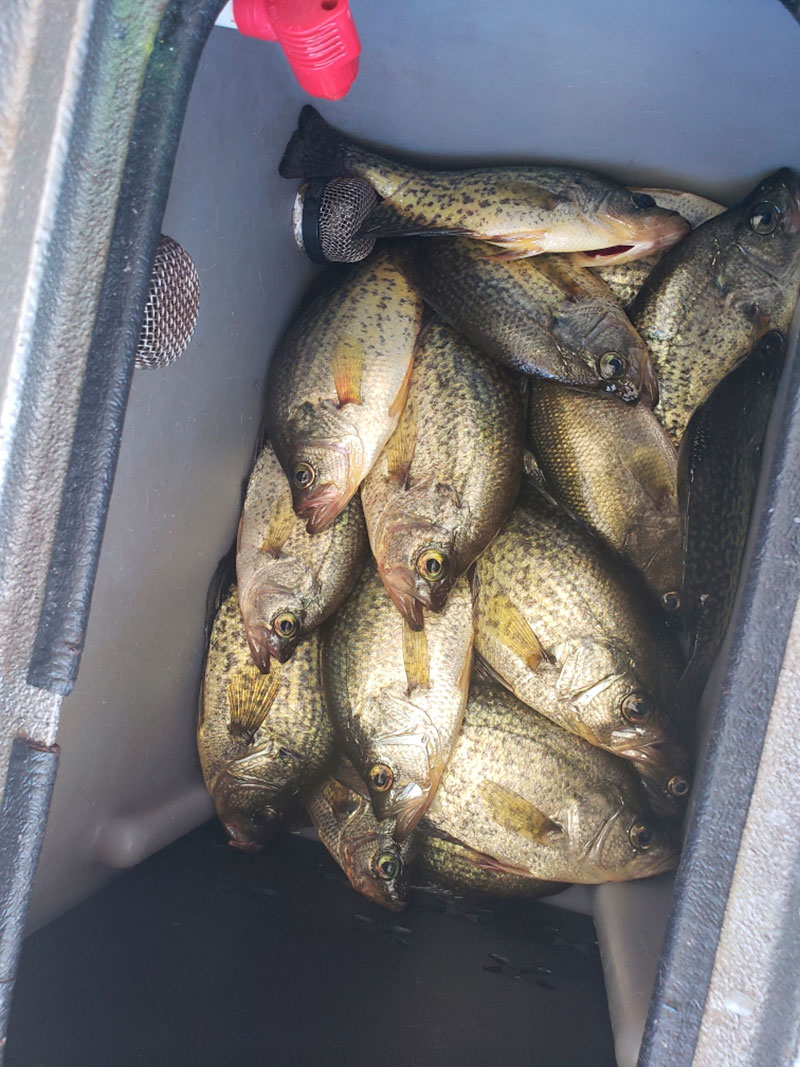
Give Bill McCarty a chance to fish sac-a-lait in October and he’ll grab one of his matching fishin’ poles, his favorite soft plastics and Crappie Nibbles, then head to the marsh, more than likely southeast of his hometown of Morgan City.
“Typically in October, once the first couple of cold fronts come through, the water temperature drops 8 to 10 degrees and the sac-a-lait bite turns on in the marsh,” McCarty said at the end of a long heat wave in August.
The sac-a-lait bite should be on at least through mid December but he can’t attest to that because he stops before then to start bowhunting.
He was dreaming about cooler days and putting sac-a-lait in the boat, either from the Bayou Black area, which he prefers, or Bateman Island. As a lifelong local resident, he knows both marshy areas well. He knows what to look for as far as water conditions such as depth and clarity.
Favorite spots
The all-around outdoorsman said around Bayou Black, his favorites are the main Coppersaw, the Penchant area and the Turtle Bayou pipeline.
“Typically, I look for main canals running north and south if I can. Even if the current is not moving at least you get the windblown current,” he said, noting he targets any kind of structure off the main shoreline, such as stumps, deadfalls and grass, in 3- to 5-foot depths.
Water clarity? He’s got to be able to see 10 to 12 inches deep, he said, noting, “It’s got to be clear.”
He’ll fish with either a blue/white tube jig on a 1/16-ounce lead head or a black/blue/chartreuse Cream Crappie Shad. He always tips both with a chartreuse Berkley Crappie Nibble.
“Always,” he emphasized, speaking of the Crappie Nibbles.
McCarty, who owns WHM Services LLC, fishes either of the soft plastics 18 to 22 inches below a small cork.
“That’s usually my preferred depth 90 percent of the time because sac-a-lait usually feed up, come up and grab it,” he said.
When he catches a fish, he’ll fish the structure thoroughly and often catch three or four more. A good laydown, he said, can give up 15-20 sac-a-lait before the school gets spooked.
Good eating size
Most of the sac-a-lait are ¾- to 1 ¼-pounders, or, as he said, “Good eatin’ fish.”
Also, the sac-a-lait are black crappie.
“Big black ones” he said. “They’re almost all black ones down there.”
When filleted, the meat has a yellowish tint from about one out of 10 sac-a-lait caught from that marsh. He believes it’s because of their diet on crustaceans and such.
And, McCarty emphasized, it’s OK to consume them.
Boat traffic, of which there can be plenty at times, doesn’t seem to affect the bite.
“It seems they’re so used to it, it doesn’t bother them,” he said.
If the fish aren’t on there, another potential hotspot in the marsh is to the west of Bayou Black on the southern end of Bateman Island, where McCarty usually catches fish in Halfway Bayou and Sam Smith Canal.


